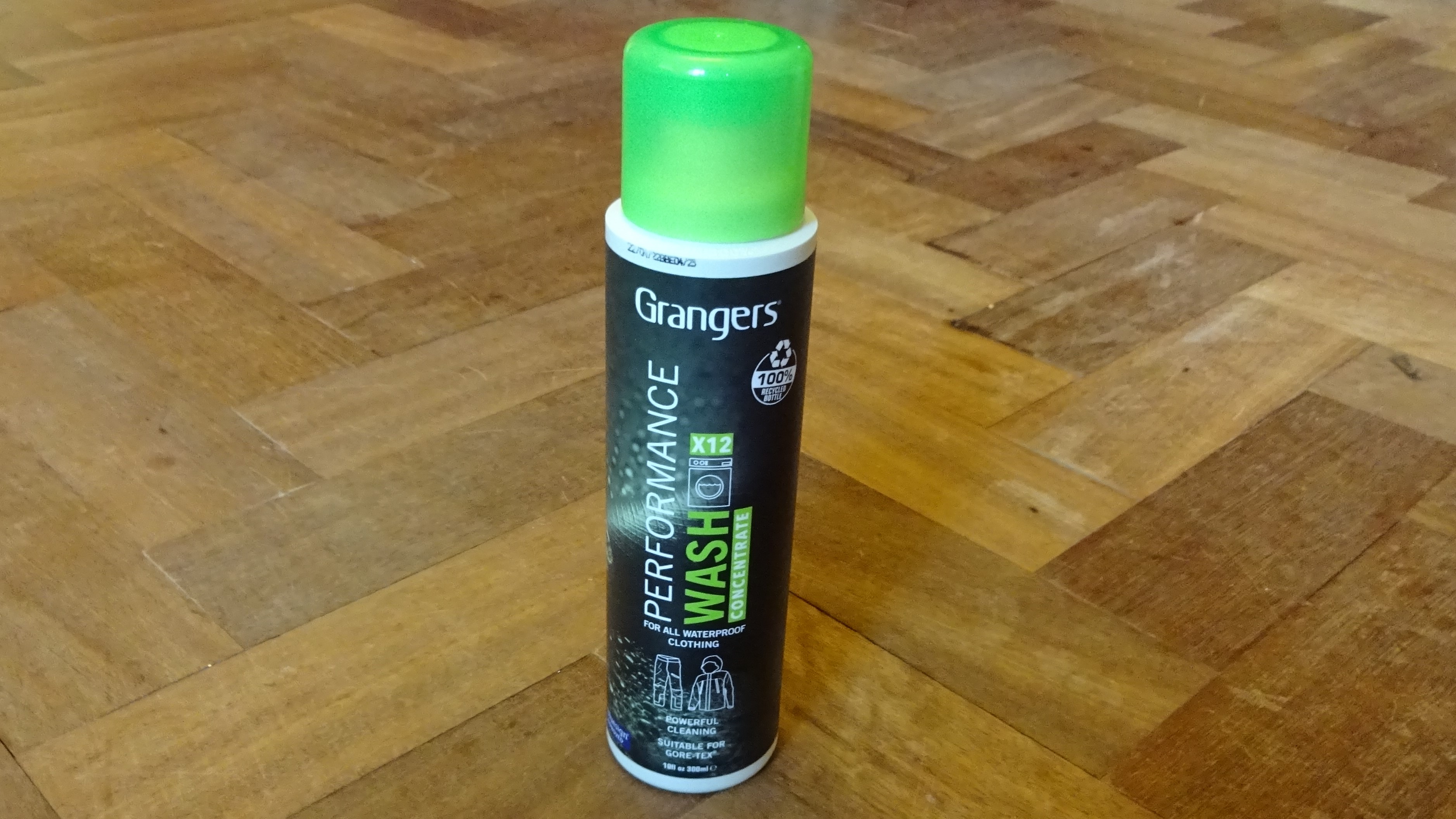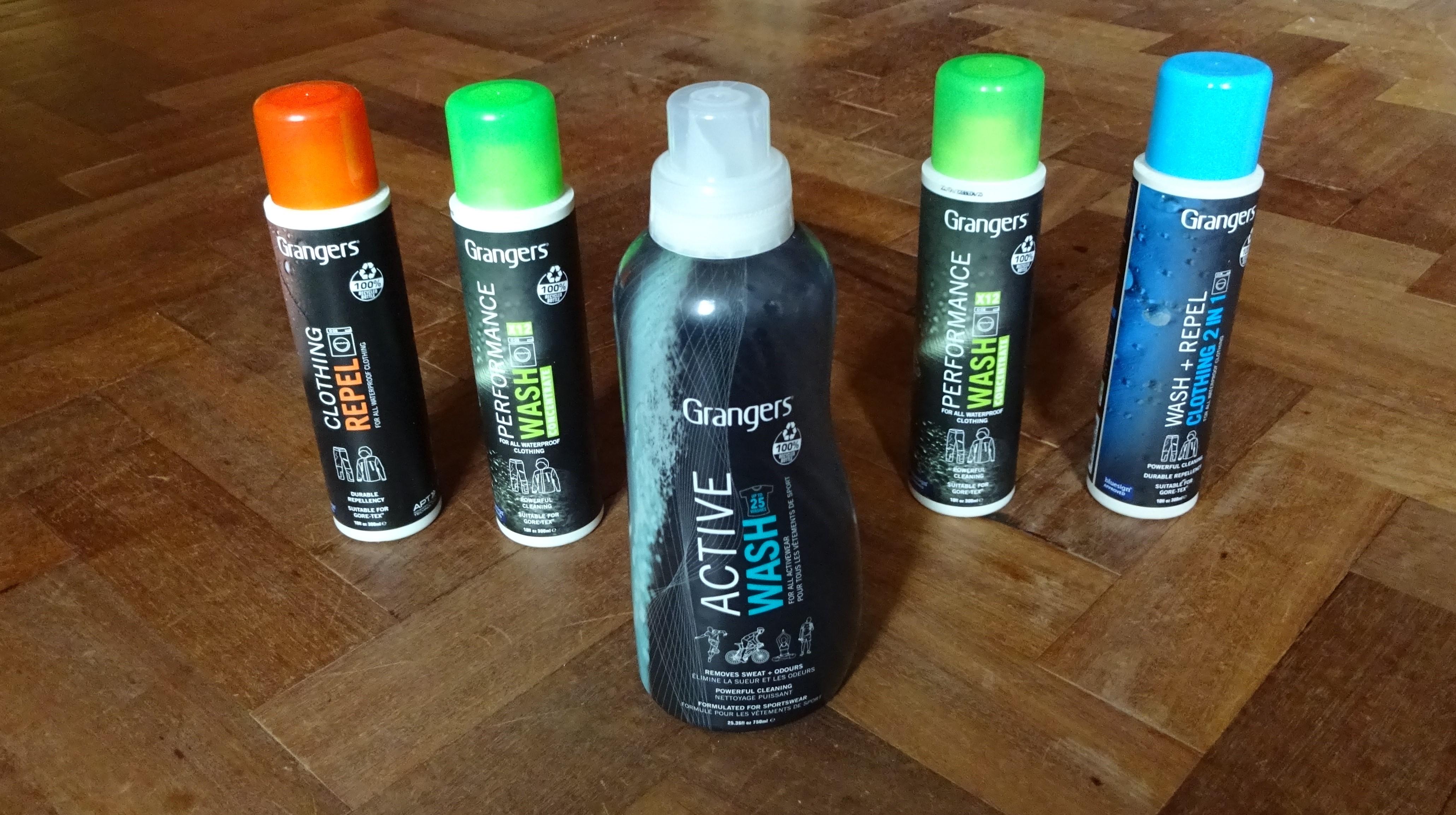Grangers Performance Wash review - new formulation doubles reproofing washes per bottle
Grangers Performance Wash will revitalise your waterproof kit

Grangers Performance Wash gets your DWR coated clothing working better without needing to reproof. It’s reasonably economical and restores beading off the outer surface, although this never seems to last as long as when your garment is box-fresh
-
+
Easy to use
-
+
Restores DWR performance, reducing wetting out
-
+
Cheaper per use than the competition
-
-
Doesn't last as long as the original coating
You can trust Cycling Weekly.

Most cycling outer layers, including the best waterproof cycling jackets have a three-layer or two-layer construction where a waterproof membrane is overlain by a fabric outer layer. There may be a third inner fabric layer too, making up the third layer.
The membrane stops water getting in from the outside, but includes pores large enough to let water vapour from your sweat and body heat out, keeping you dry.
To work effectively, though, the outer surface of the jacket needs to be hydrophobic, so that the fabric doesn’t wet out and stop the membrane from functioning. That means that the jacket is normally surface treated with a durable water resistant (DWR) coating.
The best winter cycling jackets and other softshell garments are also often DWR coated to help repel rain, as are many of the best bib tights, leg warmers and arm warmers, even if they don’t include a membrane layer. Castelli Nanoflex and Sportful No Rain clothing are examples.

Grangers sells a whole range of washing and reproofing products for your technical gear
With use, the DWR coating can wear off, but its effectiveness can also be reduced by dirt, oils, sweat and other contaminants, something that cycling outer layers are particularly prone to picking up from road spray and our physical exertion.
When your outer layers start to wet out, you need to clean them with a specialist wash product to help to restore the water repellency; standard laundry products will leave residues on the fabric surface that will exacerbate the problem.
That’s where Grangers Performance Wash comes in. It’s designed to clean your waterproof/water resistant kit without detriment to the DWR layer.
The latest race content, interviews, features, reviews and expert buying guides, direct to your inbox!
It’s really easy to use and Grangers has just reformulated it, so that you only need to use 25ml per wash and can get 12 washes from the standard 300ml bottle instead of six. Grangers also sells Performance Wash in one litre eco refill pouches, which work out at around half the price per wash of the 300ml bottle. Both sizes work out cheaper per treatment than the equivalent Nikwax Tech Wash.
You just add it to your washing machine and put your waterproof clothing through a standard wash cycle. Most waterproof kit needs to be washed at 30C, although some can be washed at 40C. To be effective, you need to limit your load to one or two pieces. Then just air dry and you’re ready to go again.
I’ve found that Grangers Performance Wash has done a good job of making my wet weather gear less prone to wetting out, making it one of the best waterproof treatments for your cycling jacket.
It does seem that the initial DWR coating tends to lose effectiveness quite quickly, though. And, once it has, you never quite get that beading and avoidance of wetting out back again - particularly with surface coated garments without a membrane. That's not unique to Grangers Performance Wash though and seems to be true of all the technical cleaners I've used.
The next step is to use a wash-in re-waterproofing treatment like Grangers Clothing Repel or a spray-on like Grangers Performance Repel Plus. In both cases, Grangers recommends washing with Performance Wash first.
Paul started writing for Cycling Weekly in 2015, covering cycling tech, new bikes and product testing. Since then, he’s reviewed hundreds of bikes and thousands of other pieces of cycling equipment for the magazine and the Cycling Weekly website.
He’s been cycling for a lot longer than that though and his travels by bike have taken him all around Europe and to California. He’s been riding gravel since before gravel bikes existed too, riding a cyclocross bike through the Chilterns and along the South Downs.
